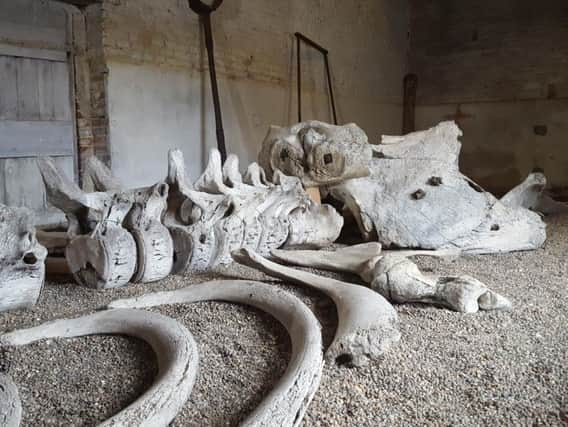Yorkshire stately home appeals for return of Moby Dick whale bones


The sperm whale was taken to Burton Constable Hall, East Yorkshire, after it washed up on the shore at nearby Tunstall in 1825.
Curator Philippa Wood said she believes people have taken bones as souvenirs with 11 of its 44 vertebrae and much of its left flipper missing.
Advertisement
Hide AdAdvertisement
Hide AdMs Wood would like to see the bones returned as the hall plans to restore the skeleton to its former glory to mark the 200th birthday of American writer Herman Melville.
She said: “We’d like to try and rejoin the missing bones with rest of the skeleton before the major restoration project.
"There is the possibility of having them 3D printed but then you lose the authenticity so we’d really like them back.”
The whale - which originally measured 58ft 6in - was recovered from the grounds in 1995, conserved and placed on display in the Great Hall of the home in 2009 before being moved to the stable block.
Advertisement
Hide AdAdvertisement
Hide AdMs Wood said: "It was in a dreadful state. It was covered in moss and the surface was very weak. It has had some conservation work but you can still tell it hasn't been in the best state."
The curator said the Burton Constable Foundation, the charitable body that runs the site, plans to restore the skeleton and re-display it as it would have been when Melville wrote about it.
She said the project will be "long and time-consuming" with a proposed completion date of 2025, to coincide with the 200th anniversary of the whale being washed ashore.
Ms Wood said: "Most of the bones would need to be removed from site to clean them, improve their surface condition, repair any that are broken and allow them to be mounted for future display.
Advertisement
Hide AdAdvertisement
Hide Ad"If the bones will allow we would like to have the skeleton articulated and mounted with metal armature in a manner that is in keeping with how it would have originally been displayed, so that it looks like it could have been mounted in the mid-19th century."
The bicentenary of Melville's birth will be celebrated with an exhibition by artist Caroline Hack at the hall this summer.